
In production, the main fluorite processing mainly methods include manual separation, gravity separation and flotation separation. them, the manual separation is often used as an auxiliary method, and the gravity separation is suitable for the production of metallurgical-grade lump ore or as a pre-processing operation for the fluorite flotation process. In view of the characteristics of fluorite raw ore dilution and inter-embedding of fluorite and gangue, flotation is currently the main processing method for separating fluorite and gangue minerals, and how to improve the flotation effect of fluorite has become a widely concerned issue.
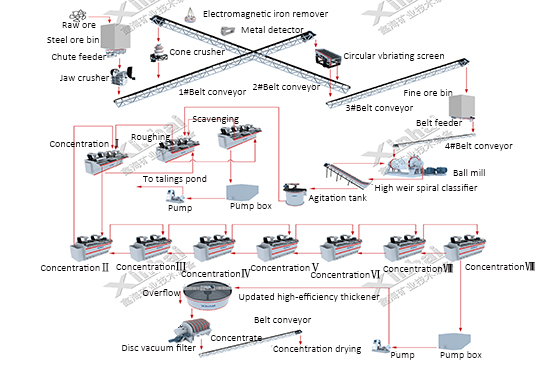
When studying how to improve the effect of fluorite flotation, in view of the complex symbiosis relationship between fluorite ore and calcite, barite, quartz, sulfide and other gangue minerals and the properties of the ore, we can start from the grinding fineness, slurry temperature, flotation reagents, slurry level, slurry pH, water quality and flotation process to improve fluorite flotation processing effect by improving the above factors.
In fluorite flotation, grinding fineness is one of the main factors that affect the processing index, which directly affects the final processing index of fluorite concentrate. On the one hand, it is necessary to determine the appropriate grinding fineness according to the embedded particle size of useful minerals, so that the useful minerals and gangue stones basically reach dissociation, and minimize the fluorite and gangue minerals congeners. On the other hand, it is necessary to prevent the fluorite flotation process from being adversely affected by too fine a grinding of the ore (i.e., the impact of over-grinding and argillation).
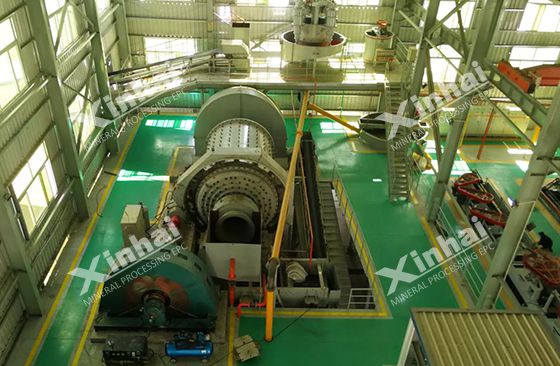
For the flotation of fluorite, when the flotation particle size is relatively coarse, the flotation selectivity is high, the fluorite concentrate grade is low and the recovery rate is high; when the flotation particle size is medium, the fluorite concentrate grade and recovery rate both are high; when the flotation particle size is fine, the fluorite concentrate grade and the recovery rate are low. Therefore, in order to obtain the ideal fluorite grade and recovery rate, processing tests should be strictly carried out, and the grinding fineness should be determined according to the nature of the fluorite ore.
When carboxylic acid collectors are used in the flotation of fluorite ore, the temperature of the slurry has a significant effect on the flotation process due to the high freezing point of the carboxylic acid.
In a certain temperature range, when the temperature is relatively high, the solubility of the carboxylic acid collectors in the slurry increases, making it easier to disperse, and the ability to collect fluorite ore is stronger, and the recovery of fluorite ore is higher. But if the dissociation of fluorite ore is not complete, some of the gangue minerals will be separated out with fluorite ore, which will lead to a lower grade of fluorite ore. When the temperature is low, the collection capacity of carboxylic acid collectors is weak, but some of the fluorite ore with good flotability will still be sorted out. At this time the fluorite ore grade is high, but the recovery rate is low. It can be seen that increasing the slurry temperature appropriately can also improve the fluorite flotation index.
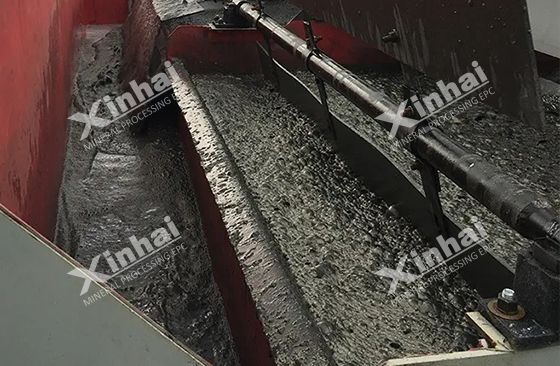
The fluorite flotation reagents mentioned here mainly focus on collectors, inhibitors and pH regulators. The commonly used collectors in fluorite flotation are mainly fatty acids, followed by alkyl sulfates, alkyl sulfonates, tall oil, organic sulfonates and sulfates. Under certain conditions, when the amount of fluorite flotation collector is large, the recovery rate is high, but the grade is low. Generally, it will increase the amount of collector and maximize the recovery rate in the roughing operation; when the amount of collectors is small, the recovery rate is also low, but its grade is high. Therefore, in the concentration operation, it generally adds less or no collector reagents to improve the grade of fluorite concentrate.
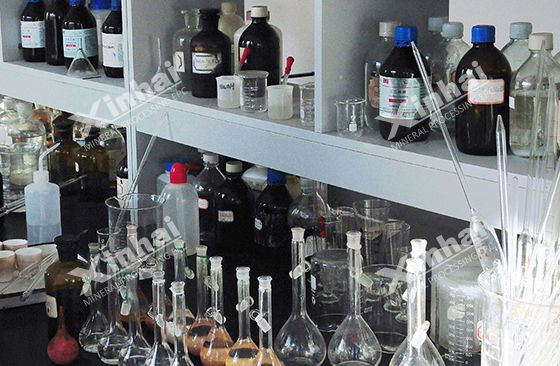
Inhibitors mainly use water glass, followed by sodium metaphosphate, tannic acid, baking gum, starch, dextrin, lignosulfonate and so on. Among them, the water glass is a commonly used depressant for fluorite flotation. In order to improve the selective inhibition ability of water glass, water glass and soluble salt can be formulated as a combined inhibitor, or with sulfuric acid in a certain proportion to form acid water glass.
The pH regulator mainly uses sodium carbonate to provide a suitable flotation environment for the collector.
In the process of fluorite flotation, fluorite minerals with better flotability will preferentially reach the top of the froth layer. When the slurry level is low, the grade of fluorite concentrate is high, but its recovery rate is low; when the slurry level is high, the recovery rate of fluorite concentrate is high, but its grade is low.
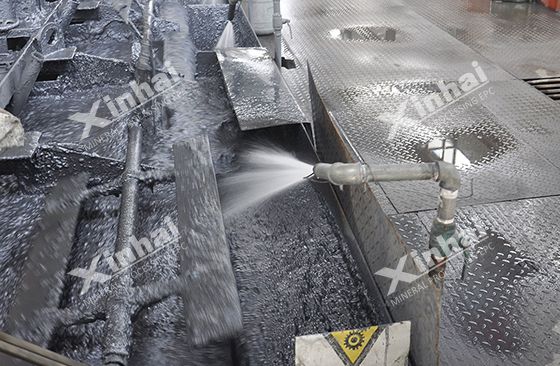
The pH value of the slurry has a great influence on the flotation of fluorite. When oleic acid is used as the collector and the pH is 8-11, the flotability is good, and the recovery rate of fluorite ore can reach 80%-90%. For different types of fluorite ore, the flotability of the gangue minerals is also greatly affected by the pH value, which in turn affects the flotation effect of fluorite ore. For example, when oleic acid is used as a collector and the pH is 8-9.5, both fluorite and calcite have better flotability.
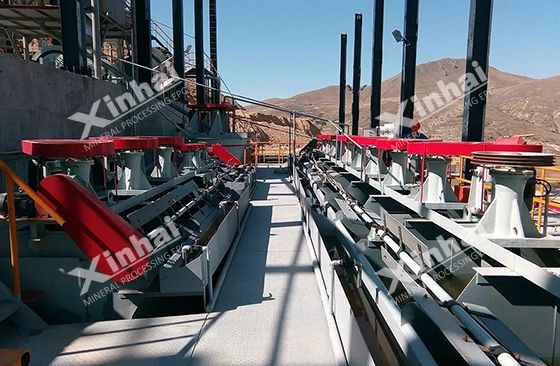
When fluorite flotation uses oleic acid as the collector, it also has certain requirements on the hardness of the flotation medium (water), that is, the collection effect is better when the water is softer. As the ordinary water contains Ca2+ and Mg2+ ions, Mg2+ will seriously interfere with the separation effect of fluorite flotation. Therefore, when the water quality is hard, fluorite flotation water needs to be pre-softened before entering the flotation separation stage, such as adding sodium carbonate for softening.
When the middlings return sequentially, part of the gangue ore will always circulate in the fluorite flotation system and cannot be thrown away, thus affecting the fluorite flotation index. In this case, the middlings with a high content in gangue minerals can be centralized and re-selected. Re-elected fluorite concentrate can be returned to roughing, and the tailings can be discarded directly. This partial re-selection and return method of the middlings not only reduce the load of the circulation system, but also significantly improve the product grade and recovery rate of fluorite concentrate.
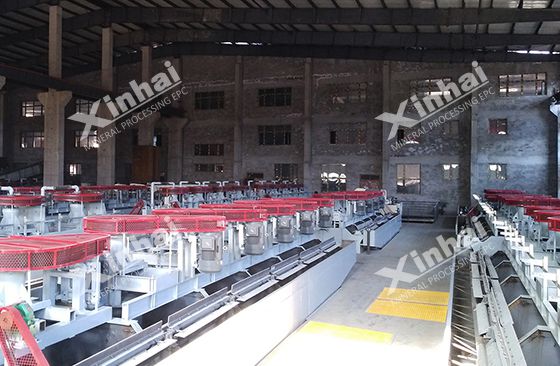
The above are the seven tricks to improve the fluorite flotation index: ensure proper grinding fineness, properly raise the slurry temperature, correct selection of flotation reagents and dosage, maintain proper slurry level, selecting a reasonable slurry pH, pre-softened water and preferential flotation. For the fluorite flotation processing plant, on the one hand, it is recommended to do the mineral processing test, according to the property of fluorite ore and plant conditions to develop a scientific and reasonable fluorite flotation separation process and technical parameters. On the other hand, it is necessary to improve the skills of operation and maintenance personnel to avoid unstable production conditions due to improper management or operational negligence, which affects the final fluorite flotation index.
To find out more about our products and solutions, please fill out the form below and one of our experts will get back to you shortly.